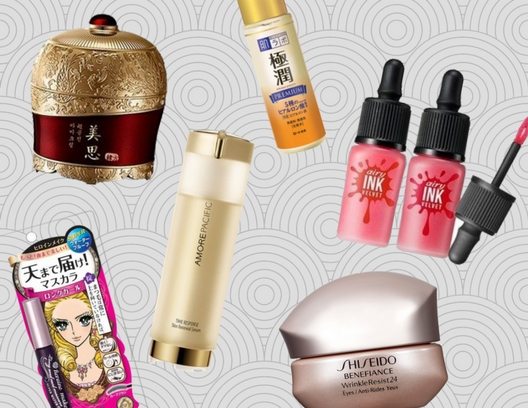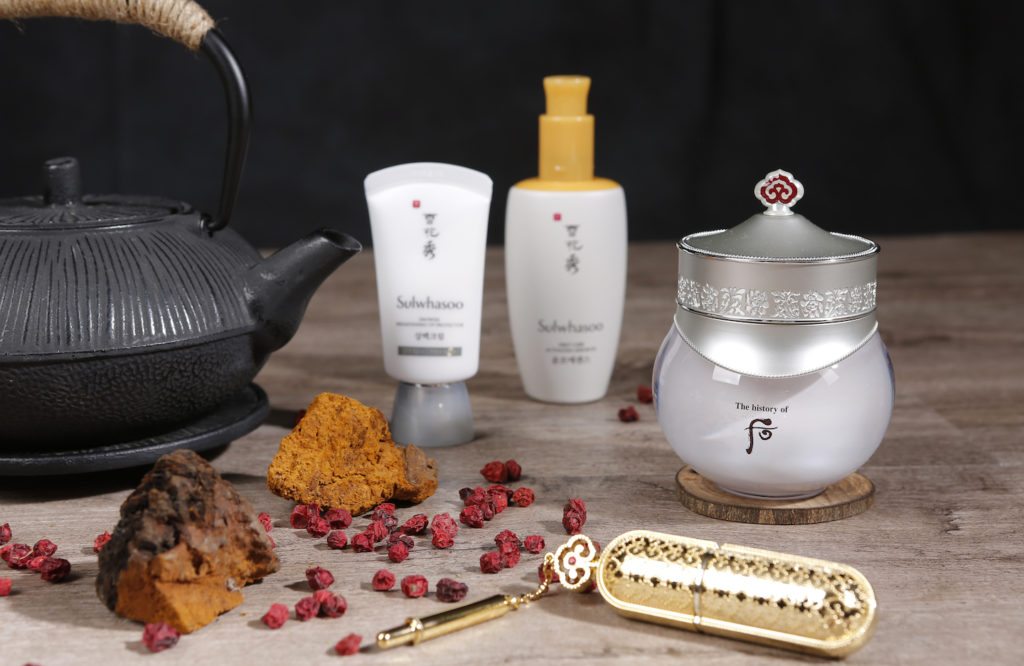Exoticization. Apples to oranges. Just plain alternative facts. We push back on some recent headlines that paint Korean beauty and Japanese beauty with some pretty broad and misleading strokes, pitting one against the other. Because really?!?
_____________________________________________________________________
There have been a couple stories making the rounds recently that was overall pretty gross. It praised the "quiet seriousness" of Japanese beauty versus the "razzmatazz" of Korean beauty, accusing the latter of being all about the 'gram and silly products in goofy jars. They painted Japanese beauty as being all about the "rituals" of beauty and elegance, saying Japan had an extensive history of traditions around beauty while Korean beauty was just buzzy junky trash. I was sitting here reading that and wondering what planet I was on. I had to go rush to my Sulwhasoo and make sure it still existed and wasn't replaced without explanation with a jar full of glittery turds in a cat-shaped jar. Have the people pushing this "Korea so crazy, Japan is so delicate and committed to ancient beauty" never heard of hanbang and somehow overlooked Japan's kawaii culture?

Hanbang is literally traditional Korean herb-based medicines, and it's ancient. Ancient, ancient. It can trace its roots back to China (as most things in the East do), but the isolated Korea put its own spin on things through the many thousands of years it developed. These medicines were used to treat all ailments and are still used to this day. I've personally seen hanbang medicine in action and used to treat my husband's arthritis. Many of hanbang's star ingredients are also beneficial to our skin's health. Heavy hitters like ginseng and camellia oil can be found in all manner of Asian skincare, both Korean and Japanese alike. This isn't anything even remotely new. Korea's roots in rituals and elegant skincare have been so deeply ingrained in the culture that there are surviving beauty artifacts from the Silla Kingdom Era (57 BC–935 AD), which you can see for yourself at the Coreana Cosmetic Museum in Seoul.

To paint all Korean products as flash-in-the-pan trends made with wacky formulas is ridiculous. Korea has some very famous high-end brands rooted in traditional hanbang. The aforementioned Sulwhasoo and The History of Whoo are two very elegant (and very expensive) examples. I don't know how you don't feel a "quiet seriousness" when using a $300 cream made of aged top-shelf herbs. There's also more affordable and very effective hanbang-based products from established lines like Su:m37 and Missha. And don't forget newcomers like Swanicoco and Eclado, which both do stellar jobs without being goofy or gimmicky.
None of this is to say I'm against Japanese beauty. I quite like a lot of it. I have tested, very much enjoyed, and even repurchased many of the famous Hada Labo products; there's a Rohto eye drops container right next to my bed and a Bioré sunscreen in my bathroom. And here's something you might have noticed from those products: None of them are operating on some spiritual level of simplicity and ritual. They're just drugstore products, housed in plastic containers. Nothing paradigm-shifting there.
I'm also puzzled by this labeling of all Korean beauty as kooky and Japan as somehow above it all and elegant. Am I taking crazy pills or is the Japanese makeup brand Kiss Me not pretty much the same level of "kawaii" as, say, Etude House makeup? I mean, if you want to pick and choose to fit your narrative, let's compare a History of Whoo lipstick with a Hello Kitty lip balm. But you wouldn't ever do that would you? Because that's apples and oranges. Kind of like trying to compare Tony Moly with Shu Uemura.
Let's stop the mystical Orientalism nonsense.
What do you think of the marketing ploy trying to pit K-beauty versus J-beauty? Do you use Japanese beauty products (or Taiwanese or French or any other kind of beauty, for that matter) in your beauty routine? What's your take on the different "genres" of beauty out there?
Loading...